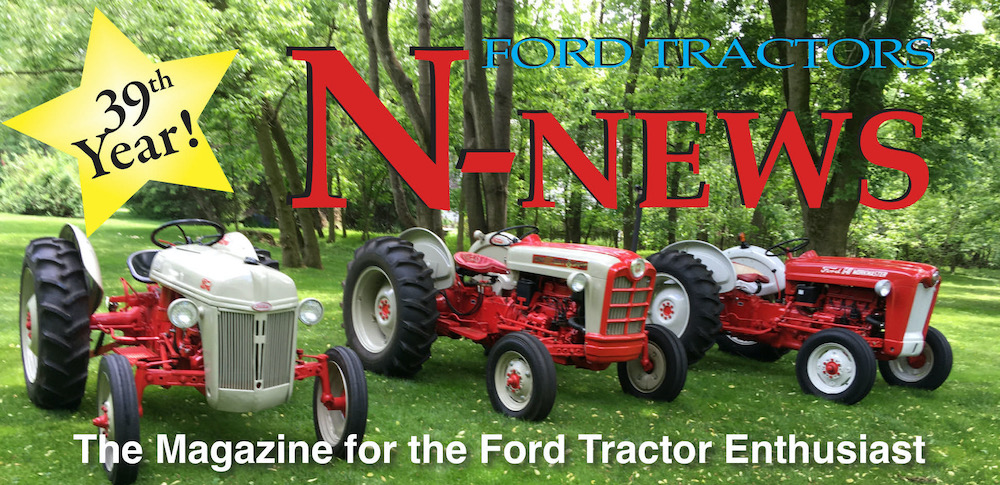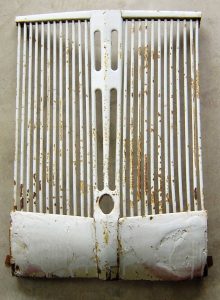By Jeff Johnson. Published in the N-News Autumn 2016. Vol. 31 No. 3.
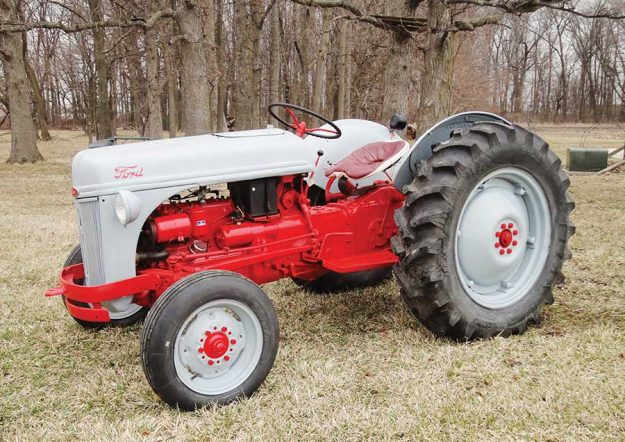 In 1997, my wife and I decided to move out of the suburbs and build a house on the old family farm in central Indiana. I asked my uncle whether I could get by with an overgrown lawn and garden tractor or if I needed something bigger. The man with the John Deere 4430 said, “You need more tractor than that. You need a Super A or an 8N. A lawn and garden tractor won’t hold up.”
In 1997, my wife and I decided to move out of the suburbs and build a house on the old family farm in central Indiana. I asked my uncle whether I could get by with an overgrown lawn and garden tractor or if I needed something bigger. The man with the John Deere 4430 said, “You need more tractor than that. You need a Super A or an 8N. A lawn and garden tractor won’t hold up.”
I immediately pressed the tractor into service, mowing the property and building a gravel driveway along the 1100′ path to the building site.
During the first winter, I discovered that the mismatched and worn-out rear tires were inadequate for removing any significant snowfall, so I replaced the tires and had them filled with calcium chloride. Wow, what a difference! I could clear snow from the driveway in two passes, using 2nd gear, sometimes 3rd.
In 2004, I realized that the tractor really didn’t have the power it should. I checked the cylinder pressures. They varied from each other fairly dramatically, and I had also been having problems with the exhaust manifold gasket burning out on the rear cylinder, due to pitting of the block. It was time for major work.
Fortunately, the premier N-Complete tractor shop in Wilkinson, Indiana was less than 30 minutes away from my home, so I loaded the tractor onto a trailer and dropped it off for a complete engine rebuild. The results were dramatic, with the tractor seeming to have suddenly doubled in power. I knew for the first time how much power that 8N was really supposed to have. Happy with the results, I kept on mowing, plowing, scooping and hauling the years away with the increasingly rusty old Ford. As I replaced or adjusted more parts (or figured out what they did), it began to dawn on me how much tractor I had gotten for my money, considering the prices of new ones.
The winter of 2013-2014 brought lots of heavy snow to central Indiana, and my usually trusty Ford gave me fits with both cranking and staying running. In the end, I replaced the starter drive, which fixed the starting problem, and I bought a brand new carburetor to replace the old one I had already rebuilt twice. Once again, the tractor started and ran fantastic. With so much of the tractor rebuilt and in great shape mechanically, it seemed a shame to have it appear so dilapidated. I decided it was finally time to freshen up the looks.
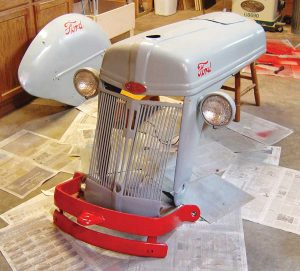 With the last snow just gone, I pulled the sheet metal off the tractor and hauled it down to my workshop. Under the unforgiving workshop lights, it looked even worse. The previous owner had done some truly poor bodywork with his can of Bondo, as evidenced by the condition of the grill (above).
With the last snow just gone, I pulled the sheet metal off the tractor and hauled it down to my workshop. Under the unforgiving workshop lights, it looked even worse. The previous owner had done some truly poor bodywork with his can of Bondo, as evidenced by the condition of the grill (above).
That was also when I discovered that the battery door was not a factory original, but a poorly made sheet metal substitute that wasn’t even drilled on center. I’d never really looked at it closely before – I would just hop on the tractor and use it. The rest of the hood had a slightly better Bondo job, but the stamped “Ford” logos on the hood and fenders were painted crudely.
I sanded out the existing Bondo on all the sheet metal to smooth things out, then sprayed on Rustoleum’s “Painter’s Touch” 2X paint + primer in winter gray. I know you purists are groaning right now, because the colors aren’t true, but the results were great in the end.
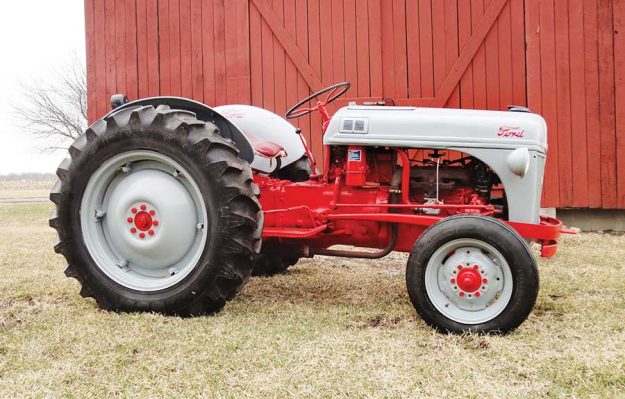 Seeing the sheet metal looking so nice made the rest of the tractor look that much worse. Rustoleum had another paint + primer color called Apple Red, so I tried it out on the front bumper I had just sanded out. I realized at that point I had to paint the whole tractor, including the wheels.
Seeing the sheet metal looking so nice made the rest of the tractor look that much worse. Rustoleum had another paint + primer color called Apple Red, so I tried it out on the front bumper I had just sanded out. I realized at that point I had to paint the whole tractor, including the wheels.
As I degreased and lightly sanded the frame, I found the serial number – 8N 279422. I thought, “Hey wait – that’s a 1950 serial number!” So I had actually purchased a 1950, despite the previous owner’s claim. Ah, ignorance is bliss, and I didn’t know better at the time. After the painting job was complete, I finally had a tractor whose looks matched the mechanical condition of the tractor.
The first thing I did after completing the paint job? Why, I hooked up the mower deck to the 3-point hitch and started mowing weeds on the road frontage, of course!
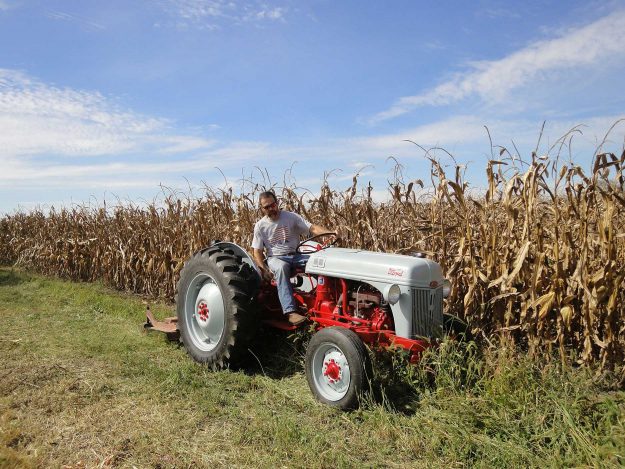
 Enjoy this article? Subscribe to the N-News Magazine for more essential N-News! Subscribers have made the print version of the N-News Magazine a success for over 30 years. Subscribe today!
Enjoy this article? Subscribe to the N-News Magazine for more essential N-News! Subscribers have made the print version of the N-News Magazine a success for over 30 years. Subscribe today!
